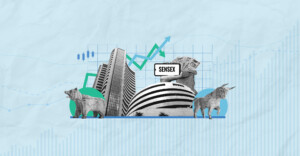
Definition of Sensex
SENSEX is a blend of the two words, sensitive and index. The BSE SENSEX is a free-float market-weighted stock market index composed of 30 well-established and financially solid companies listed on the Bombay Stock Exchange. Its other names are SENSEX and S&P Bombay Stock Exchange Sensitive Index. The 30 firms that make-up the index are among the biggest and most liquid stocks, comprising a cross-section of the Indian economy’s main industrial sectors.
To further simplify, consider the Sensex as a numerical update on the performance of 30 of the most liquid and financially secure corporate stocks listed on the BSE Limited. The overall state of the Indian economy, the market’s equity health, and investor and trader attitude are all reflected in the index. Participants will trade more actively and raise the index if they see the economy performing well in the near future.
How are they selected?
The 30 corporate stocks that make up the “market index” are referred to as constituents of the Sensex. They are picked based on the following benchmarks:
- To begin with, for the equities to qualify for index inclusion, they all need to be listed on the BSE. However, the listing history must be at least six months old.
- In order to facilitate trading, the stock should have more liquidity.
- The company should be categorized as large or mid-sized based on its market capitalization. Or, to put it another way, it ought to rank in the top 75 corporations in terms of total market valuation (the value of the company’s shares held by insiders and outside investors).
- Last but not least, the company ought to have a weighted balance of sectors. The weight of a company in the index increases with its market capitalization.
Sensex calculation
The float-adjusted capitalization approach, often known as free float market capitalization, is used to determine the BSE Sensex. The terminology can be broken down into two main parts:
- Free float, or floating shares,
- Market capitalization, or market cap.
To learn more about how Sensex is calculated, connect with our experts at AMG today!

